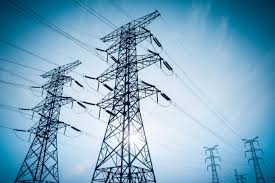Electricity Market Watch
Sector research is one of the key directions of Galt & Taggart Research. We currently provide coverage of Energy, Healthcare, Tourism, Agriculture, Wine, and Real Estate sectors in Georgia. As part of our energy sector coverage, we produce a monthly Electricity Market Watch, adapted here for Georgia Today’s readers. Previous reports on the sector can be found on Galt & Taggart’s website - gtresearch.ge.
Expected changes in legislation
The draft law on electricity and natural gas sets the new threshold for mandatory registration for direct consumers at 15.0 GWh of average monthly consumption from May-2018. This law is expected to be approved by Parliament by mid May 2018. The current law requested mandatory registration of direct consumers from all companies connected to the high voltage (35kV+) transmission grid from May 2018. After approval of the law, companies eligible to register as direct consumers will be reduced from the expected 60 to the 4 following companies: Georgian Incorporation, BFDC Georgia, Tsekhi-1, and Block Power. Other companies will retain the option to be registered as direct consumers, with the exception that they will no longer be able to go back to the distribution companies’ services. Notably, BFDC Georgia and Geo Servers already voluntarily registered as direct consumers on April 30, before the enforcement of the law.
Electricity consumption drivers in 2017
Consumption growth in 2017 was mainly driven by the consumption of the non-residential sector: 1) The direct consumers increased their consumption by 18.1% y/y, due to increase of the Georgian Manganese production level and 2) the non-residential subscribers of distribution licensees increased their consumption by 8.4% y/y, in line with the average growth rate over 2012-2017. New commercial entities added to the distribution grid are the main drivers of the growth.
Electricity consumption by residential subscribers of distribution licensees was down by 2.0% in 2017 and accounted for 20% overall domestic consumption. Notably, the average growth rate of residential consumption is 1.9% over 2012-2017 and we do not expect significant changes to this trend in the near future.
Electricity consumption and generation – March 2018
Domestic electricity consumption increased 9.3% y/y to 1.1TWh, slightly above the planned level (+2.9%). The sole contributors to consumption growth were distribution licensees: 1) Energo-Pro Georgia subscribers’ consumption increased by 18.8% y/y. The growth can be explained by addition of new commercial subscribers; 2) Telasi consumption was up 10.2% y/y.
There was no Electricity export or transit in March 2018, although the annual balance envisaged the export of 28.0 GWh. Georgian Urban Energy, owner of Faravani HPP, has a long-term transmission and dispatch agreement, enabling the company to export the predetermined volume of electricity from March to November each year to Turkey. For three consecutive years, Georgian Urban Energy has voluntarily sold electricity to ESCO instead of exporting it. In 2018, Georgian Urban Energy will export only in May, June and July.
Electricity generated by domestic sources increased by 34.5% y/y. Hydro generation showed significant increase (+42.4% y/y) in March 2018 from a very low base (-21.7% y/y) in March 2017. Enguri/Vardnili generation almost doubled, increasing 87.5% y/y from last year’s low base when Enguri had low generation due to its halted operation in February 2017. The Abkhazian region consumed 87.4% of electricity generated from Enguri/Vardnili. The generation of other regulated and deregulated HPPs also increased significantly by 20.4% y/y and 42.8% y/y, respectively, due to high water flow and the addition of new HPPs (Dariali and Khelvachauri) to the group of deregulated HPPs. Thermal generation was up 14.4% y/y, but significantly below the planned level (-29.1%). Wind generation showed a 21.1% y/y decrease to 7.1GWh and contributed 0.6% of total supply.
The surplus in hydro generation reduced electricity imports by 48.4% y/y from last year’s high base, when interruption in Enguri increased demand for imports drastically. Most of the imported electricity came from Azerbaijan (77.3% of total imports of Mar-18), while the rest came from Turkey. Notably, it was first time since 2008 that Turkey served as import country. This import was reflection of ESCO’s tender on barter of electricity won by Aksen Enerji in February 2018.
Electricity prices in Georgia and Turkey
The average import price increased by 26.9% y/y to USc 5.0/kWh, from USc 3.4/kWh last year. In March 2017, there was subsidized electricity import from Russia via Salkhino line to satisfy the excess needs of the Abkhazian region.
Despite higher import price, the wholesale market price was down by 2.3% y/y to USc 5.0/kWh, due to low electricity imports. Electricity traded at the wholesale price through the market operator was 24.4% of total electricity supplied to the grid, down from 30.7% in March 2017.
The average price of electricity in Turkey was up 2.4% y/y to USc 4.1/kWh, 17.2% below the wholesale market price in Georgia.
By Mariam Chakhvashvili











